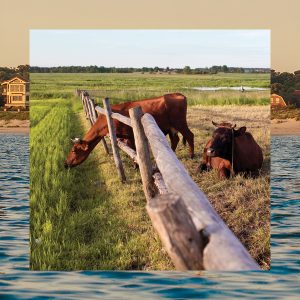Think about the Chesapeake, with 18 trillion gallons of water feeding into it, traveling into the estuary from more than 150 streams, creeks, and rivers that drain land in Maryland, Virginia, Delaware, Pennsylvania, and other states. One-quarter of this land is agricultural. And the water running off these farms carries with it fertilizers, pesticides, and nutrients that damage plant and animal life in the bay.

Is it fair to ask farmers to forgo tilling their soil to protect rockfish and crab populations, which live hundreds of miles downstream?
Today, the U.S. government spends about $6 billion annually on conservation programs, which are largely incentive-based programs aimed at encouraging farmers to change their practices by doing things such as planting marshland along waterways, rotating crops, and changing the way they till soil. But according to Ferraro, there still isn’t a science-based evaluation system to determine how to persuade farmers to adopt these conservation practices and how to do it at the least cost to the taxpayer.
One idea: Ferraro and others will test whether using auctions more efficiently incentivizes farmers to adopt environmentally-friendly farm practices, such as planting grass buffers along field edges to catch and filter nutrients before water drains into the bay.
Currently, the U.S. government guesses at the right “price” to pay farmers. This guessing typically leads to underpaying and having lackluster participation or overpaying and wasting taxpayer money. Ferraro’s hunch is that empowering farmers to compete in an auction in which they name their own prices likely will be a more efficient and effective way of saving the bay. Another upside: Early indications suggest that auctions make farmers feel like they have more control over their choices.
“Engineers, natural scientists, and physical scientists have come up with a lot of good ideas about how to reduce pollution runoff from farms,” says Ferraro. “But we know less about how to induce farmers to adopt these ideas. Without a solution to the human part of the equation, our best engineering solutions won’t solve anything.”




